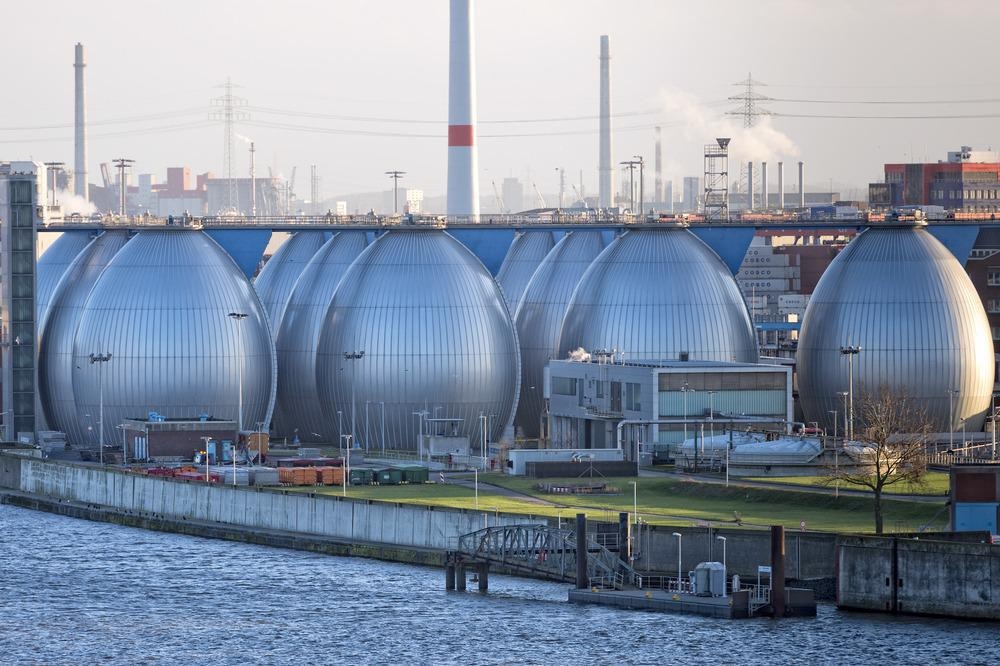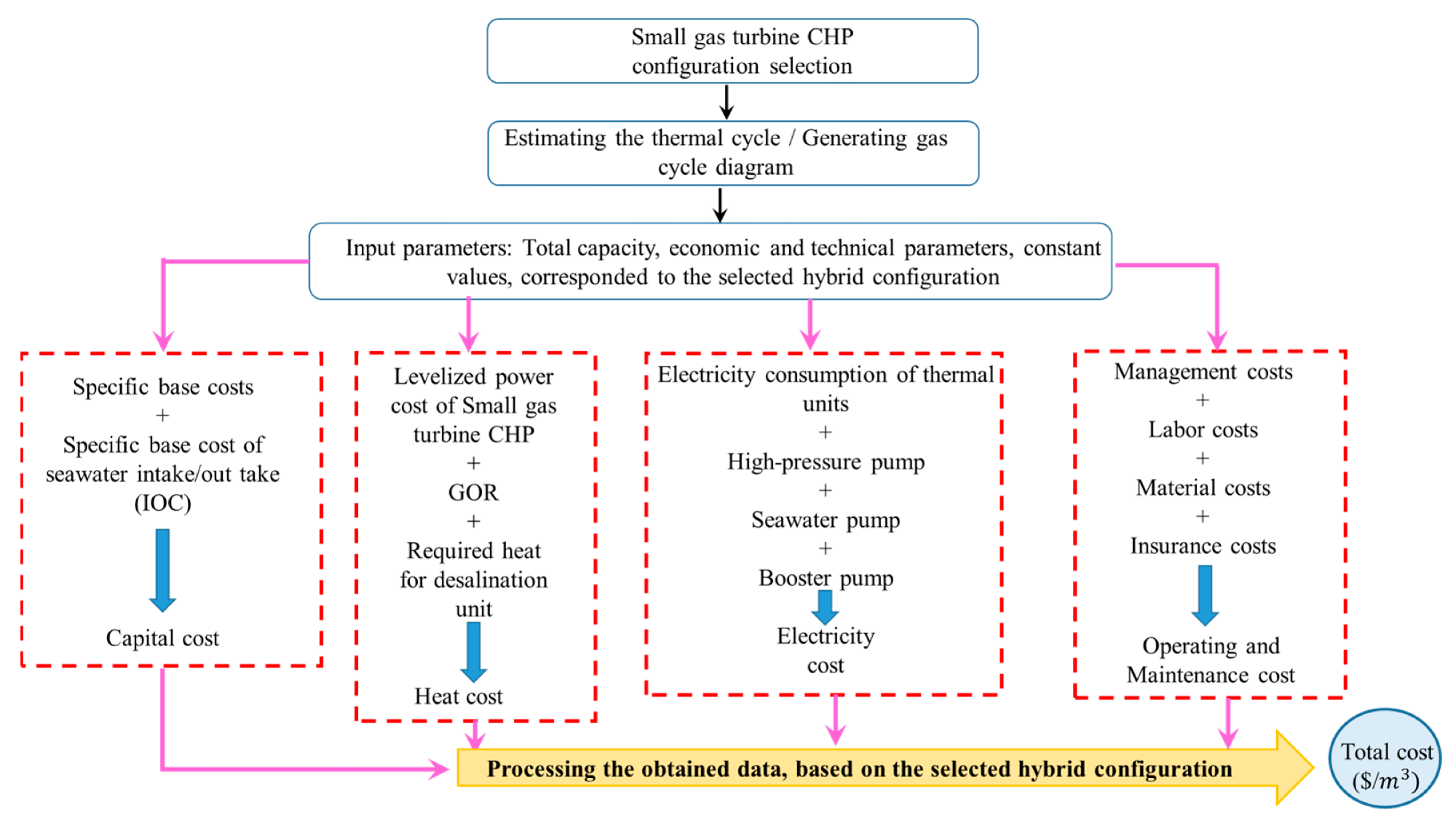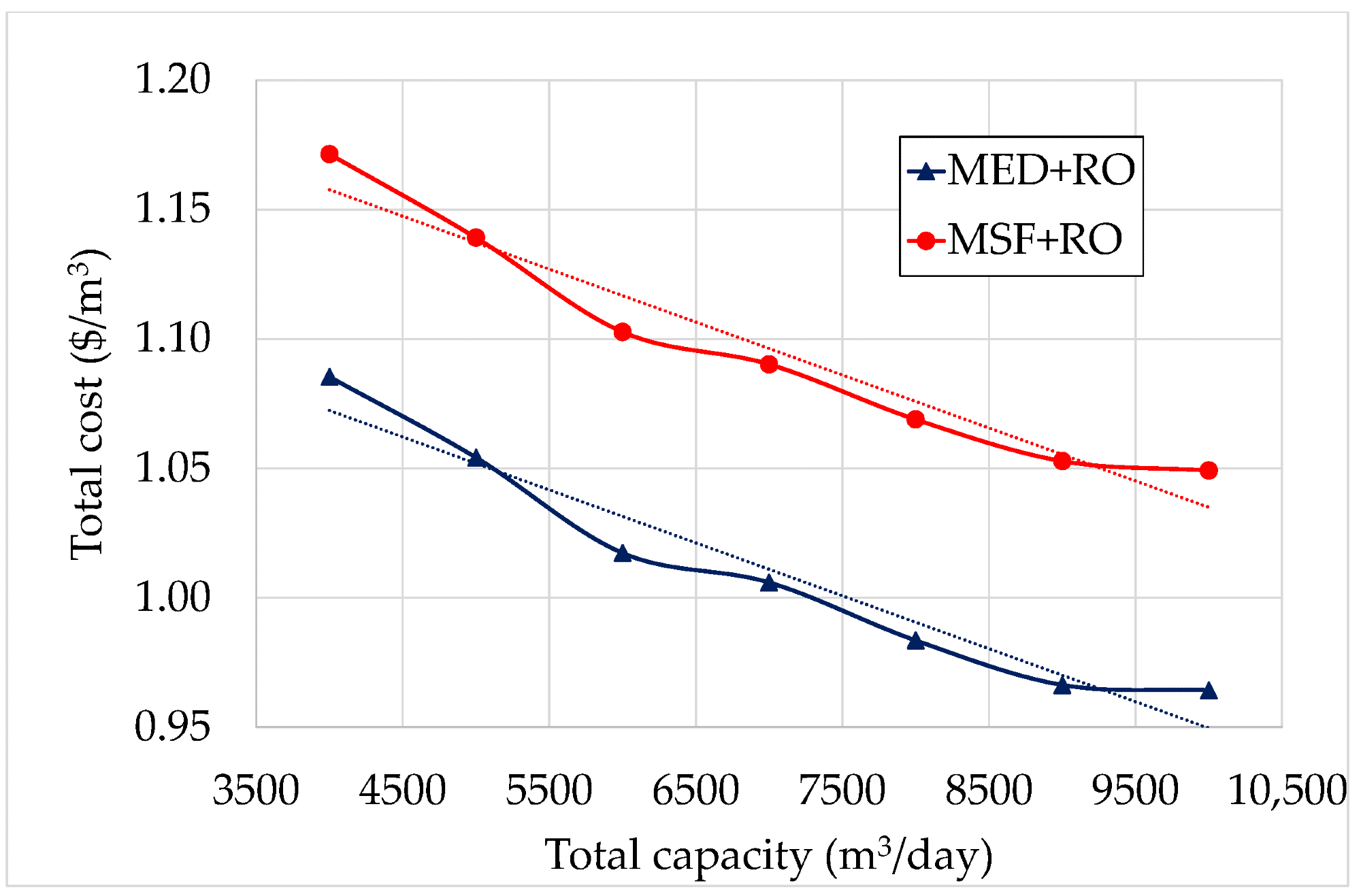 By Surbhi JainReviewed by Susha Cheriyedath, M.Sc.May 18 2022
By Surbhi JainReviewed by Susha Cheriyedath, M.Sc.May 18 2022In an article recently published in the open-access journal Energies, researchers discussed the feasibility of hybrid desalination of plants with small gas turbine combined heat and power (CHP) systems.

Study: Feasibility of Hybrid Desalination Plants Coupled with Small Gas Turbine CHP Systems. Image Credit: Andrea Izzotti/Shutterstock.com
Background
Freshwater shortages have become more prevalent in several parts of the world in recent decades. Because current desalination devices use a lot of energy, researchers wanted to see whether there were any alternatives that could improve the overall efficiency of these systems.
The most common thermal technologies are multi-effect distillation (MED) and multi-stage flash (MSF). It is incredibly easy to apply the cogeneration idea for energy savings, which is highly recommended because it can be carried out using waste heat from a standalone power plant, resulting in the lowest desalination costs.
Reverse osmosis (RO) membranes have become the most common solid removal technique among membrane desalination systems. It is believed that using hybrid desalination methods will improve the efficiency of desalination plants (DPs). In theory, this technology is being utilized as an alternative to using thermal desalination methods to improve the quality of the water generated by RO membranes.
The gas cycle integration with desalination units is recommended, as it allows for the use of waste heat from the exhaust to provide the energy needed for thermal desalination methods. From an economic standpoint, it is highly recommended to provide the required heat by utilizing the high potential exhaust gas.

Schematic of the hybrid desalination plant coupled with the GT CHP system. Image Credit: Noori, A. W. et al., Energies
About the Study
In this study, the authors looked into the feasibility of combining a small gas turbine combined heat and power system (GT CHP) with hybrid desalination plants (HDPs). To better harness the electrical and thermal energy produced by the micro-CHP plant, a hybrid desalination technique based on the employment of two different desalination technologies was adopted.
The proposed system was quantitatively analyzed from both a thermodynamic and an economic standpoint. For comparison with the hybrid solutions, the economic assessment of the standalone desalination systems was also shown.
The team used the design process to utilize tiny CHP power plants for off-grid applications. Economic analysis was presented to analyze the cost of produced water. The planned plant used a simple gas topping cycle, i.e., Brayton–Joule cycle.
The maximum turbine inlet temperature was set by the material. To assure the mechanical durability of the turbine this value was chosen at 950 °C. The proposed power system was combined with a hybrid desalination plant that combined two desalination technologies. The power plant's size was determined by the upper limit of the GT architecture, which used single-stage radial machinery for the compressor and turbine.
The researchers conducted a cost-benefit analysis of various desalination methods for an integrated small gas cycle with a hybrid desalination plant. The coupling of water desalination to the proposed gas cycle-based plants on the two probable scenarios of hybrid seawater desalination was done and explored in order to attain this goal. A cost-benefit analysis of independent desalination plants was also performed.

The techno-economic evaluation flowchart based on the DEEP program.Image Credit: Noori, A. W. et al., Energies
Observations
The MSF system, which needed temperatures of the order of 90–120 °C, imposed the most restrictive temperature condition on the two types of proposed thermal processes. The heat recovery steam generator recovered a substantial amount of heat power due to the high value of the turbine outlet temperature.
It was demonstrated that the high potential of the proposed hybrid DP, which allowed for the simultaneous provision of both electric and thermal power to the two desalination processes, maximized freshwater production per unit fuel mass flow rate.
The suggested gas turbine power generation system, which was based on a single-stage centrifugal compressor and an uncooled centripetal turbine, allowed for easy design and low installation costs. The total cost of water produced by multi-effect distillation (MED) + RO was lower than the total cost of water acquired by multi-stage flash (MSF) + RO, and the energy cost of the RO + MED hybrid desalination system was roughly 15% lower than the energy cost of stand-alone RO desalination technology.
As a result, the RO + MED hybrid desalination system could be considered a potential alternative for coupling with the suggested tiny GT CHP plant, which could be easily deployed in off-grid or isolated places due to its affordability, small size, and ease of installation.
According to the results, the total cost of the water produced by MSF + RO technology was around 6.7% more than the cost of the produced water by MED + RO technology. By expanding the total capacity of both MSF + RO and MED + RO desalination facilities, the water costs were reduced from 1.085 to 0.96 $/m3 and 1.17 to 1.05 $/m3, respectively. The overall energy cost of the MED + RO desalination system was 0.341 $/m3.

Total cost of produced water versus the total capacity (degree of hybridization = 35%). Image Credit: Noori, A. W. et al., Energies
Conclusions
In conclusion, this study proposed the deployment of compact power plants based on gas turbine engines as the energy source. The water cost of the proposed scheme was lower than the water cost of the renewable-based power plant.
The authors mentioned that in the event that relevant fuel costs rise, the water cost differential between the methods provided in this study and those using renewable energies may become lower.
Disclaimer: The views expressed here are those of the author expressed in their private capacity and do not necessarily represent the views of AZoM.com Limited T/A AZoNetwork the owner and operator of this website. This disclaimer forms part of the Terms and conditions of use of this website.
Source:
Noori, A. W., Royen, M. J., Medved’ová, A., et al. Feasibility of Hybrid Desalination Plants Coupled with Small Gas Turbine CHP Systems. Energies 15(10) 3618 (2022). https://www.mdpi.com/1996-1073/15/10/3618.